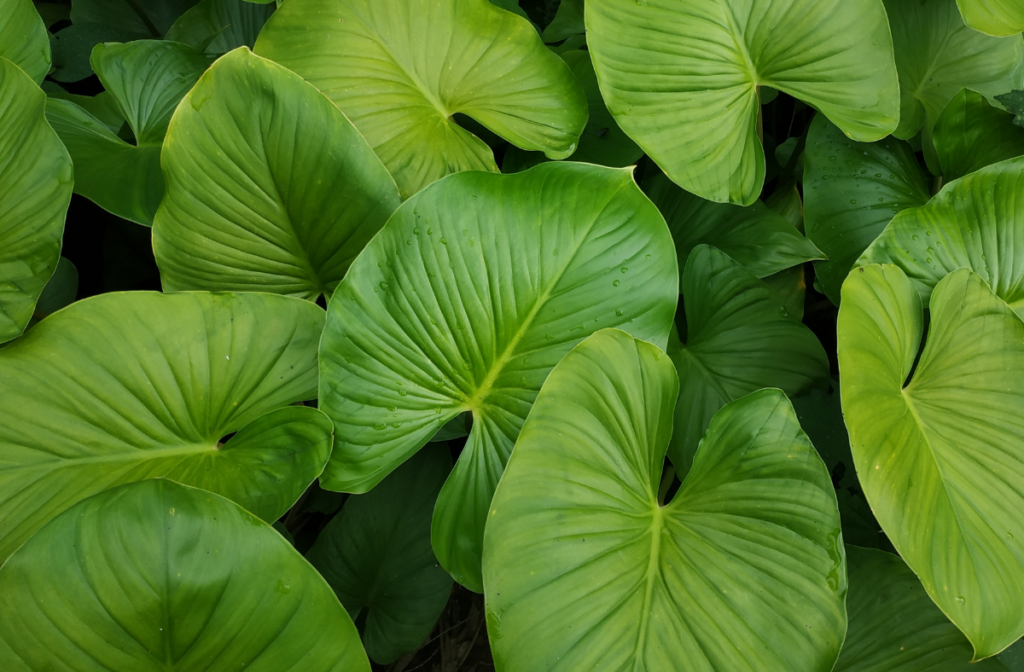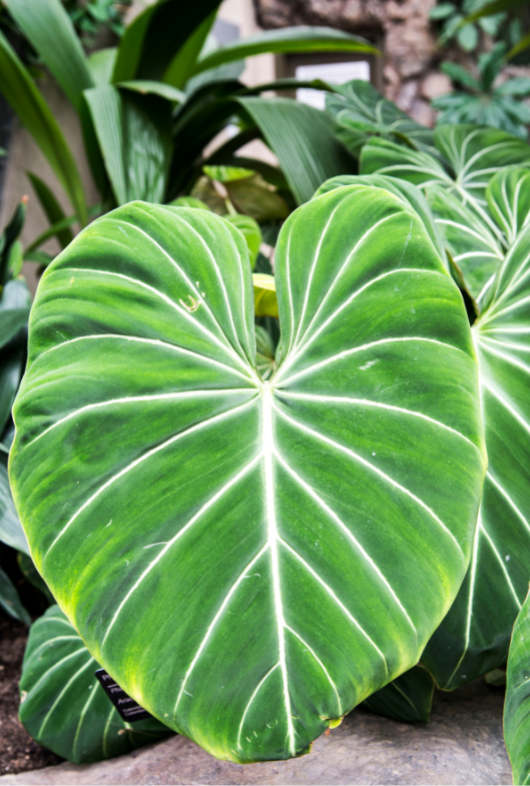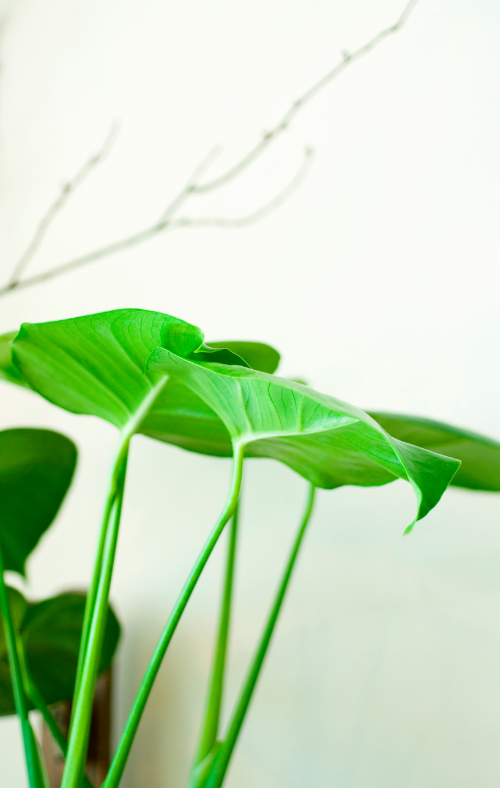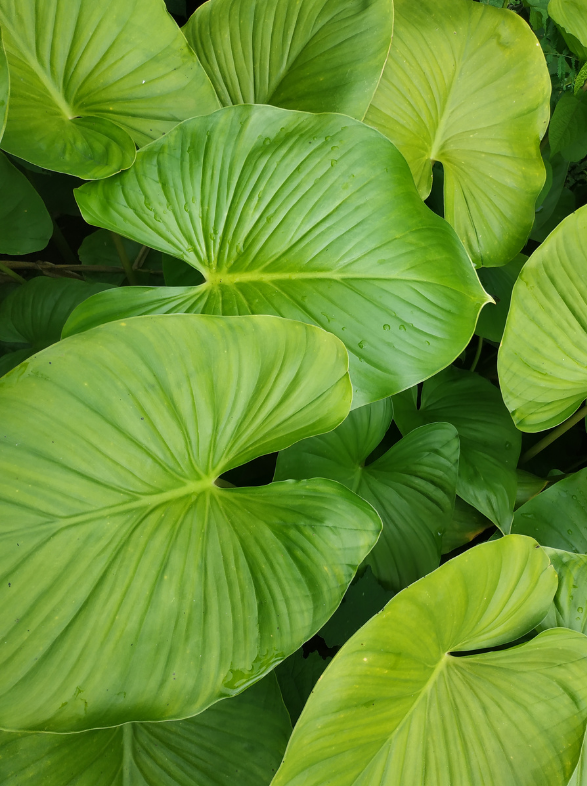Are you looking for a medium-height plant that would give you the whole tropical/summer-Esque vibe? Say no more! Alocasia Imperial Red plant will be the new perfect addition to your cozy kitchen or even your homey bathroom.
Want to know more about this catch? Keep reading!

Alocasia Imperial Red Profile
General Information
The Alocasia imperial red is a hybrid cultivar coming from the tropical and subtropical Asia and Eastern Australia areas. However, this plant has no apparent origin. It is misnamed Philodendron Imperial Red due to its close resemblance with the sister Aroid genus.
The imperial red has a mature height of about 4 feet tall in an indoor environment and is slightly more prominent in their native humid lands. Its foliage is large, deep green, and elephant-shaped that grows on red stalks with rhizomatous or tuberous bases. These babies’ foliage usually grows way more significant than its stalk. That’s why they have a compact, bushy look.
Etymology
Alocasia is known for its delicate leaves with exciting patterns. Mainly, Imperial Red is known for its deep red stem with ample ruffled green foliage, hence its name.
Season Of Interest And Purchasing
The Imperial Red Elephant Ears, just like the Black Velvet, actively grow during spring and summer and go into dormancy during the colder months, especially winter. Therefore, it might be best to purchase or start developing a young plant around spring for it to grow out steady and healthy.
Growth
Like other plants from tropical and subtropical Asia, Alocasia Elephant Ears and Colocasia thrive in tropical climates and warmer temperatures with medium light requirements. Data shows that this plant can adapt to many light conditions as long as it is not directly under the sun or beside the window.
As long as they are in warmer temperatures, indirectly lit, and humid environment (but not soggy!), they will thrive and stay happy!
RELATED: Alocasia Dragon Scale: Your Must-Have Care, Propagation, and Watering Guide
Care Tips

Light Requirement
As mentioned, they thrive in bright indirect light. So, if you are planning to place them outdoors, select a well-lit corner that is not too exposed to long hours of direct sun as it can scorch its delicate leaf. During cloudy and sunless days, it may be necessary to compensate for the natural light with fluorescent lamps placed at a suitable distance to keep them healthy.
Temperature Requirement
The imperial red prefers a good, warm environment ranging between 65 to 80 degrees Fahrenheit. Data shows that they have poor tolerance and resistance to cold. Temperatures below 55 degrees Fahrenheit can kill this beauty, so make sure to bring them indoors before the winter to have a healthy plant.
Like you, they like cozy and warmer temperatures, so your bedroom during the winter is good enough for your Imperial Red
Water Requirement
This plant is drought-tolerant, but it needs to be watered regularly and thoroughly. To keep them hydrated, water their soil thoroughly and wait for the upper 3 inches to dry before watering. Just make sure the soil will not become soggy.
Watering this plant depends on temperatures, light, and humidity. In an average atmosphere during the spring and summer with warmer temperatures, once to thrice a week would be sufficient. However, it is just enough to water them once every three weeks during colder months to maintain their healthy growth.
Humidity Requirement
Ideally, high humidity keeps your Alocasia Imperial Red happy. A minimum of 50% moisture range keeps them alive, while above 70% would be best to get them thriving. They can be perfectly suited in high humidity areas in your house such as your pantry, or your bathroom.
If your environment is a bit dry, you can use popular methods like misting, using pebble-water trays and room humidifiers. Any of these strategies will work, as long as the plants stay at a well-aerated place. Also, watch out for pesky fungi and pests as they are strongly attracted to humid places, too.
Soil Requirement
Soil that is rich, loosely packed, and well-draining soil goes well with this plant. Soggy soil is a no-no. You can use a packed houseplant mix if they are placed indoors. Any porous and chunky like perlite, crushed bark, peat moss, coco chips, and river sand makes your Imperial Red healthy.
Fertilizer Requirement
Ideal fertilization may only require giving mild doses of graded fertilizer once a month, during spring and summer. The crucial part here is also to avoid over-fertilizing the plant. To know whether it is over-fertilized, look for scorches on its leaf. Furthermore, It is not necessary to give fertilizers after the end of summer and the colder months or temperatures.
Space Requirement
The leaf of the Imperial Red is quite sensitive and delicate. Ensure that your plant is placed away from strong winds, not too close in front of fans, air conditioners, and heaters to keep them healthy. It grows about 4 feet tall to be placed in the corner of your warm, cozy bedroom, your bathroom, or your pantry.
RELATED: Alocasia Nebula: All the Must-Have Care, Propagation and Watering Guide
Growing And Planting Tips
Propagation
The Imperial Red is quite known to be a challenging plant to propagate. Unlike other nodded plants, they can not be planted and then wait for them to grow. Instead, propagation by division is the most commonly used method by most domestic growers.
To propagate successfully, the environment should be ideal and meet its minimum requirements like warmth and humidity. The perfect season to propagate is during the spring and summer, never in fall or winter or the colder months or temperatures. Here are the description and the specific steps to propagate your Imperial red:
- You can divide when a baby plant is already visible around the mature plant, particularly in the growing season.
- Wait until the small base of the baby plant develops a few leaves. You can see the small ones known as puppies or chicks where the old leaves fall off. The stems also become visible when a baby plant develops.
- Choose the baby plant with the most aerial roots for propagation. To help them grow quicker, you can also air layer an aerial root.
- Ensure the soil is loose around the baby plant before cutting the connecting root. Make use of a clean, sterilized knife to avoid contamination.
- Take out the baby plant and plant it in your desired plant. Please take note of the plant’s soil, place, water, and light requirements for it to grow. Avoid soggy soil in the first week.
- You can now follow the care explained above for your new baby plant Imperial Red when it gets firm in the new soil.
Pruning
Unlike other Alocasias, pruning here is different. You can cut the damaged ones from the outer sides, but pruning the head is never encouraged. The only possible case to do this is when the plant is years old with several heads developed at the base. Pruning also keeps them healthy and thriving.
Potting and Repotting
The imperial red generally does not need frequent repotting. Usually, they like to grow root-bound. Signs that tell you they need to be repotted include a base becoming prominently bigger than the pot and roots getting out from the drainage holes of your pot.
The only season for repotting the baby plant is during spring and summer, not in fall or winter. Remember that these plants also go to dormancy during the colder months or temperatures, winter and fall, so avoid disturbing them, or you may lose your plant.
Loosen the soil thoroughly and take the whole plant with the roots to repot. Ensure that you save enough roots and don’t damage them when repotting to keep them healthy.
RELATED: Alocasia Sarian: Ultimate Care Guide, Propagation, and More
Problems And Troubleshooting

Overwatering
Knowing if your tropical plants are overwatered is through their foliage and roots. General drooping of the leaf is one, as well as wet feet and yellowing, watery blisters, edema, and brown spots that can be seen on the surfaces of the leaf.
Overwatering may also cause root rot which can manifest as a particular smell [of rotting tissue], especially on the base of the plant.
To avoid overwatering, make sure that your Alocasia is being watered correctly. It is also important to note that it is getting its minimum requirements such as well-draining soil, moist soil, bright indirect light, and a specific moisture level.
In addition, avoid planting it in a large pot and make sure that the drainage holes are not larger than the plant by 1-2 inches when repotting.
Underwatering
Underwatered Alocasia Elephant Ears are generally easier to notice. Brown and crispy edges or tips of the leaves and a cracky upper soil are the usual indicators that your plant is not getting enough water.
To avoid this, eliminate possible factors that contribute to underwatering. For example, it may be helpful to check the plant’s pot size to ensure its ideal growing zone. But, again, paying attention to the plant’s needs is critical.
Nutrient Deficiency
Common nutrient deficiencies in other plants do not exclude Alocasia elephant ears. Nutrient deficiencies usually manifest as yellowing of leaf surfaces or edges, holes, burnt foliage, purplish hues on leaves, brown spots, distorted leaves, soft texture, and stunted roots.
To fix this, the right and balanced fertilizer must be in use. A nutrient strength that is too strong may also be as detrimental as nutrient deficiency, so this should be in check. Soil pH is also essential since it is a significant factor in the plant’s nutrient uptake.
Flowering Problems
Alocasia plants generally do not have regular flowering seasons. Thus flowering time is not relied on. However, they usually flower during spring and summer and never in fall and winter or when temperatures are low. Ensure that your plants produce flowers and ensure that optimum care and requirements are given; exceedingly sufficient lighting is crucial for flowering.
Problems With People And Animals
Toxicity
The foliage and stem of Alocasia plants contain calcium oxalate crystals which can induce irritation and swelling in the throat and mouth of humans and animals. These irritations and swelling may cause death due to airway blockage in the worst-case scenario.
Alocasia Plants Meaning and Symbolism
They say that Alocasias are “trees that grow up to the heavens”, even though botanically speaking, they are not trees. With this, they symbolize seizing opportunities and taking risks. They are perfect gifts for people who are about to make major life decisions such as moving into a new city or venturing into a new business.
Landscaping And Gardening Ideas
Companion Plants
Plants such as other Alocasias (Black Velvet, African Mask), Caladiums, Colocasia, and Xanthosoma make great companions to these plants. Other plants like Canna lilies, decorative bananas, Dieffenbachia, Ficus, Schefflera, and Coleus, may also be with Alocasias as they exude the same tropical scenery vibe.
Landscaping Ideas
In gardens, Alocasias can be on the perennial borders. Its foliage, shaped like elephant ears, is a good break from the rest of the plants, especially those with colorful hues.
In terrariums and vivariums, it can be in the center with other foliage and flowering plants. It can also be with plants with purple hues, which provide more drama when juxtaposed with the leaves of Alocasias.
Conclusion

Alocasia Imperial red is the perfect addition to your lonely corner. It has large elephant-ear-shaped leaves growing on reddish stalks arranged in a rosette-like pattern. It is relatively drought-resistant and tolerant to many light conditions. Just make sure you give your plant its needed warmth, humidity, and the right amount of watering to make them happy.
FAQS
How often to water Alocasia Imperial Red?
As a general rule for all Alocasias, you only water them when the soil is wholly parched to avoid overwatering. Dip a finger or any object in the top three inches of the soil to see moisture. Also, water it once a week, especially during colder months, fall or winter, except in summers when it should be watered thrice.
How do you propagate Imperial Red?
You can propagate Imperial Red via rhizome division. First, cut a piece of rhizome from your mother plant and plant it in a separate pot with a proper growing medium. Please place it in a spot with bright indirect light and allow it to root correctly.
How do you care for Alocasia Imperial Red?
To properly care for Alocasia Imperial Red, you need to place it in an environment with optimum light, humidity, and temperatures. A well-draining soil must also be in use to avoid wet feet. Fertilization can also boost the plant’s health. Attention to the plant’s needs is key to having a healthy Imperial Red.
Can Alocasia Imperial Red live indoors?
Yes, definitely. Alocasia Imperial Red can be an indoor houseplant. But, you make sure to provide it with the proper growing conditions and care to thrive. More so, during fall or winter, they are best kept indoors.
Is Alocasia Imperial Red invasive?
No. Alocasia Imperial Red is not invasive. They grow steadily and do not strongly compete with resources from other plants as an invasive plant does.
Hope you like our Alocasia Imperial Red article, make sure to check out more of our awesome articles:
5 Breath-taking Types Of Calathea For Your Private Tropic Corner
What A Drac: 9 Reasons Why Your Dracaena Is Changing Color
21 Types of Sansevieria – Indestructible, Exotic, and Elegant Air Purifiers







